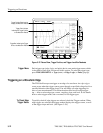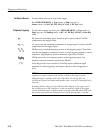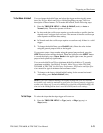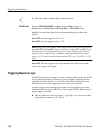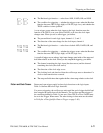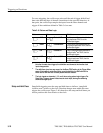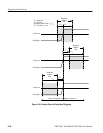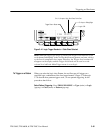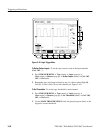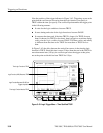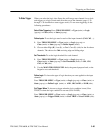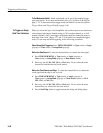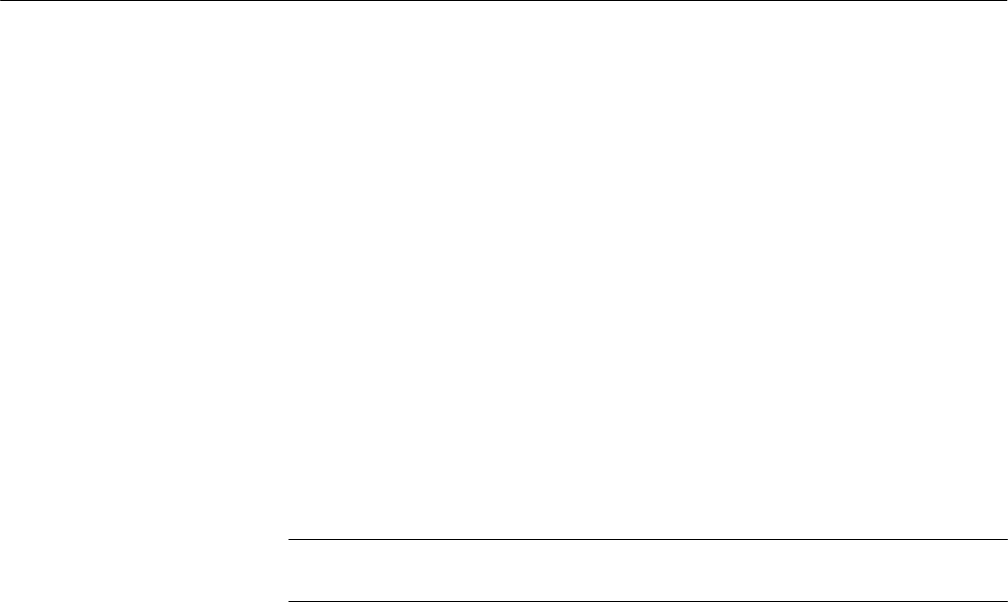
Triggering on Waveforms
TDS 500C, TDS 600B, & TDS 700C User Manual
3–79
Setup/hold triggering uses the setup/hold violation zone to detect when data is
unstable too near the time it is clocked. Each time trigger holdoff ends, the
oscilloscope monitors the data and clock sources. When a clock edge occurs, the
oscilloscope checks the data stream it is processing (from the data source) for
transitions occurring within the setup/hold violation zone. If any occur, the
oscilloscope triggers with the trigger point located at the clock edge.
Positive settings for both setup and hold times (the most common application)
locate the setup/hold violation zone so it spans the clocking edge. (See the top
waveform in Figure 3–40.) The oscilloscope detects and triggers on data that
does not become stable long enough before the clock (setup time violation) or
that does not stay stable long enough after the clock (hold time violation).
Negative settings for setup or hold times skew the setup/hold violation zone to
locate it before or after the clocking edge. (See the bottom and center waveforms
of Figure 3–40.) The oscilloscope can then detect and trigger on violations of a
time range that occurs before or one that occurs after the clock.
NOTE. Keep hold time to at least 2 ns less than the clock period or the oscillo-
scope cannot trigger.
To quickly check if logic triggers are selected and if so, what class, check the
Trigger readout. When logic triggers are selected, the trigger readout displays the
selected logic trigger class: Pattern, State, or StlHld (Setup/Hold). (See
Figure 3–41.)
To Check Logic
Trigger Status




